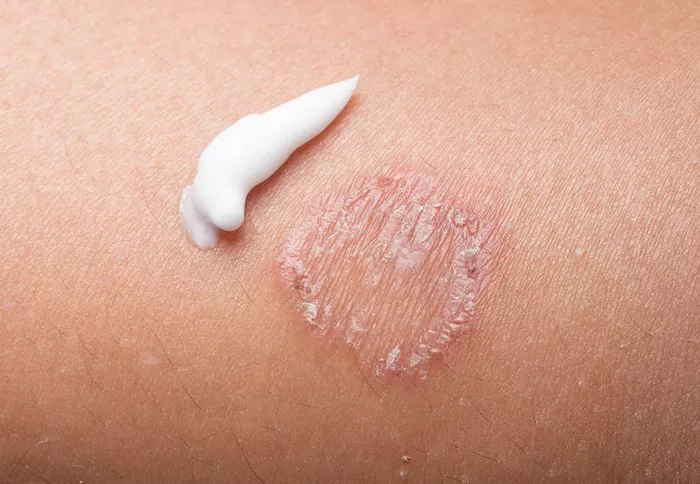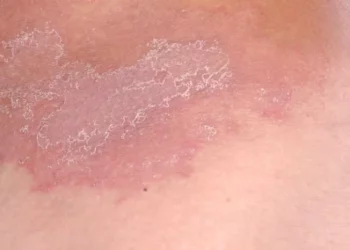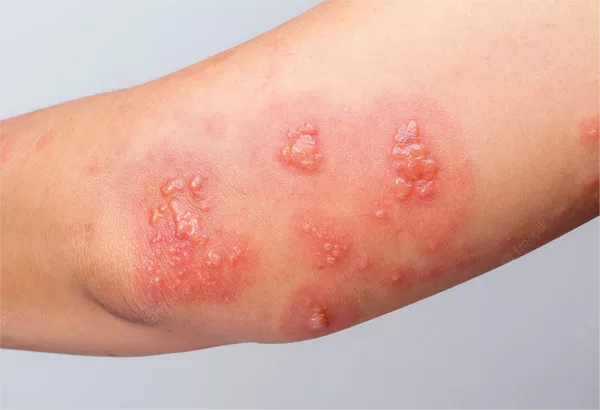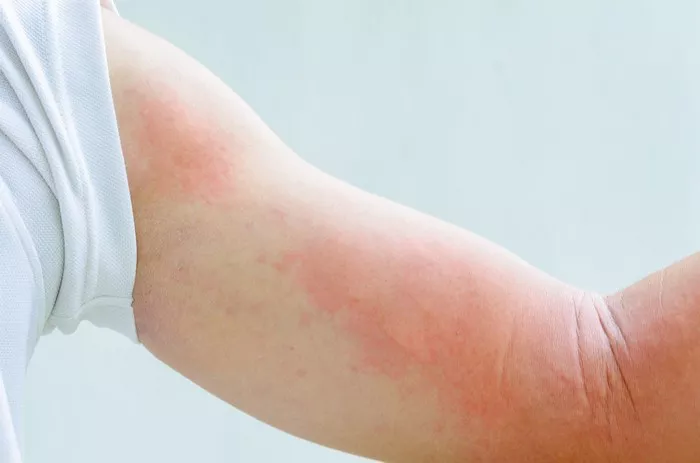Ringworm, despite its name, is not caused by a worm but by a fungal infection. It can appear on various parts of the body, including the skin, scalp, and nails. Ringworm can cause significant itching, redness, and discomfort. Finding the best cream for itching and ringworm is crucial for effective treatment. In this article, we will explore what ringworm is, its symptoms, the causes, the best creams available, and some additional tips for relief and prevention.
Understanding Ringworm
What is Ringworm?
Ringworm, medically known as tinea, is a common fungal infection that can affect the skin. The term “ringworm” comes from the characteristic ring-shaped rash that often appears on the skin. Various types of fungi cause ringworm, including Trichophyton, Microsporum, and Epidermophyton.
Types of Ringworm
Tinea Corporis: Affects the body, commonly known as ringworm.
Tinea Pedis: Affects the feet, also known as athlete’s foot.
Tinea Cruris: Affects the groin area, commonly referred to as jock itch.
Tinea Capitis: Affects the scalp, primarily seen in children.
Tinea Unguium: Affects the nails.
Symptoms of Ringworm
Red, scaly patches: These patches often have raised edges and may look like a ring.
Itching: One of the most common symptoms is intense itching.
Bald patches: In tinea capitis, the scalp may have bald patches.
Blisters or pustules: In some cases, blisters may form on the affected area.
SEE ALSO: Best Cure for Ringworm on the Scalp
Causes of Ringworm
Ringworm is highly contagious and can spread through direct contact with an infected person or animal. It can also be contracted from contaminated surfaces, such as towels, clothing, or shower floors. Factors that increase the risk of ringworm include:
Weakened immune system: Individuals with weakened immune systems are more susceptible.
Moist environments: Fungi thrive in warm, moist areas, making sweaty clothes or damp environments conducive to infection.
Poor hygiene: Inadequate personal hygiene can lead to the spread of ringworm.
Choosing the Best Cream for Ringworm
When treating ringworm, it’s essential to choose the right antifungal cream. Here are some of the best creams for itching and ringworm:
1. Clotrimazole Cream
Active Ingredient: Clotrimazole
Description: Clotrimazole is an effective antifungal that treats various fungal infections, including ringworm. It works by inhibiting the growth of fungi.
Application: Apply a thin layer to the affected area two to three times daily. Continue treatment for at least two weeks after symptoms disappear.
Pros:
- Widely available over the counter.
- Generally well-tolerated with minimal side effects.
Cons:
- May take time to see results.
2. Miconazole Cream
Active Ingredient: Miconazole
Description: Miconazole is another popular antifungal that effectively treats ringworm and other skin infections. It works by disrupting the fungal cell membrane.
Application: Apply to the affected area twice daily for two to four weeks, depending on the severity of the infection.
Pros:
- Fast-acting and effective.
- Available in various forms, including powders and sprays.
Cons:
- Some individuals may experience skin irritation.
3. Terbinafine Cream
Active Ingredient: Terbinafine
Description: Terbinafine is a potent antifungal used to treat ringworm. It works by preventing the fungi from growing.
Application: Apply once or twice daily to the affected area for one to two weeks.
Pros:
- Typically results in faster symptom relief.
- Effective against stubborn fungal infections.
Cons:
- Not suitable for individuals with certain medical conditions.
4. Ketoconazole Cream
Active Ingredient: Ketoconazole
Description: Ketoconazole is an antifungal that is effective against a wide range of fungal infections, including ringworm. It interferes with the fungal cell membrane.
Application: Use once daily on the affected area for two to four weeks.
Pros:
- Effective for resistant infections.
- Available by prescription.
Cons:
- May have more side effects compared to over-the-counter options.
5. Ciclopirox Cream
Active Ingredient: Ciclopirox
Description: Ciclopirox is a broad-spectrum antifungal effective against ringworm. It works by disrupting fungal metabolism.
Application: Apply to the affected area once or twice daily for up to four weeks.
Pros:
- Can be effective for stubborn infections.
- Minimal risk of developing resistance.
Cons:
- May take longer to see results.
6. Terbinafine Tablets
Active Ingredient: Terbinafine
Description: For severe or persistent cases, oral terbinafine may be prescribed. It treats the infection from within.
Application: Follow your doctor’s prescription for dosage and duration.
Pros:
- Effective for widespread or resistant infections.
- Fast relief from symptoms.
Cons:
- Potential side effects, including liver function changes.
How to Apply Antifungal Creams
Clean the Affected Area: Wash the area gently with soap and water. Pat it dry with a clean towel.
Apply the Cream: Use your fingertips or a clean applicator to apply a thin layer of cream over the infected area.
Avoid Covering: Do not cover the treated area unless instructed by a healthcare provider.
Wash Hands: Always wash your hands after applying the cream, unless your hands are the affected area.
Managing Itching Associated with Ringworm
Itching can be one of the most distressing symptoms of ringworm. Here are some tips to manage itching effectively:
1. Cold Compress
Applying a cold compress can help soothe itching. Use a clean cloth soaked in cold water and place it on the affected area for 15-20 minutes.
2. Anti-itch Creams
Over-the-counter hydrocortisone cream can help reduce inflammation and itching. Use it sparingly and not as a primary treatment for ringworm.
3. Oral Antihistamines
Over-the-counter antihistamines, such as diphenhydramine (Benadryl), can help relieve itching. Always follow the dosage instructions.
4. Keep the Area Dry
Fungi thrive in moist environments. Ensure the affected area is dry and avoid tight clothing that can cause sweating.
5. Avoid Scratching
Scratching can worsen the condition and lead to secondary infections. Keep nails trimmed and consider wearing gloves if necessary.
Preventing Ringworm
Preventing ringworm is crucial to avoid recurrence or spreading the infection. Here are some preventive measures:
1. Maintain Good Hygiene
- Wash your hands regularly, especially after touching pets or visiting communal areas.
- Bathe daily, especially if you sweat a lot.
2. Keep Skin Dry
- Wear moisture-wicking clothing during physical activities.
- Change out of wet clothes promptly.
3. Avoid Sharing Personal Items
Do not share towels, clothing, or personal grooming items like combs and brushes.
4. Treat Pets
If your pet has ringworm, ensure they receive proper treatment. Consult a veterinarian for appropriate antifungal medications.
5. Wear Appropriate Footwear
In communal showers or pools, wear flip-flops or shower shoes to prevent athlete’s foot.
When to See a Doctor
If symptoms persist despite treatment, or if the infection worsens, it’s essential to consult a healthcare provider. Seek medical advice if you experience:
- Worsening redness, swelling, or pus.
- Fever or chills.
- Extensive hair loss with tinea capitis.
Conclusion
Ringworm is a common fungal infection that can cause significant itching and discomfort. Choosing the right cream for itching and ringworm is essential for effective treatment. Over-the-counter antifungal creams like clotrimazole, miconazole, and terbinafine are effective options. Managing itching with cold compresses and anti-itch creams can provide additional relief. Preventing ringworm involves good hygiene practices and avoiding sharing personal items. If symptoms persist or worsen, consulting a healthcare provider is crucial for appropriate treatment. With the right approach, ringworm can be treated effectively, allowing you to enjoy healthy, itch-free skin.
Related topics:



























